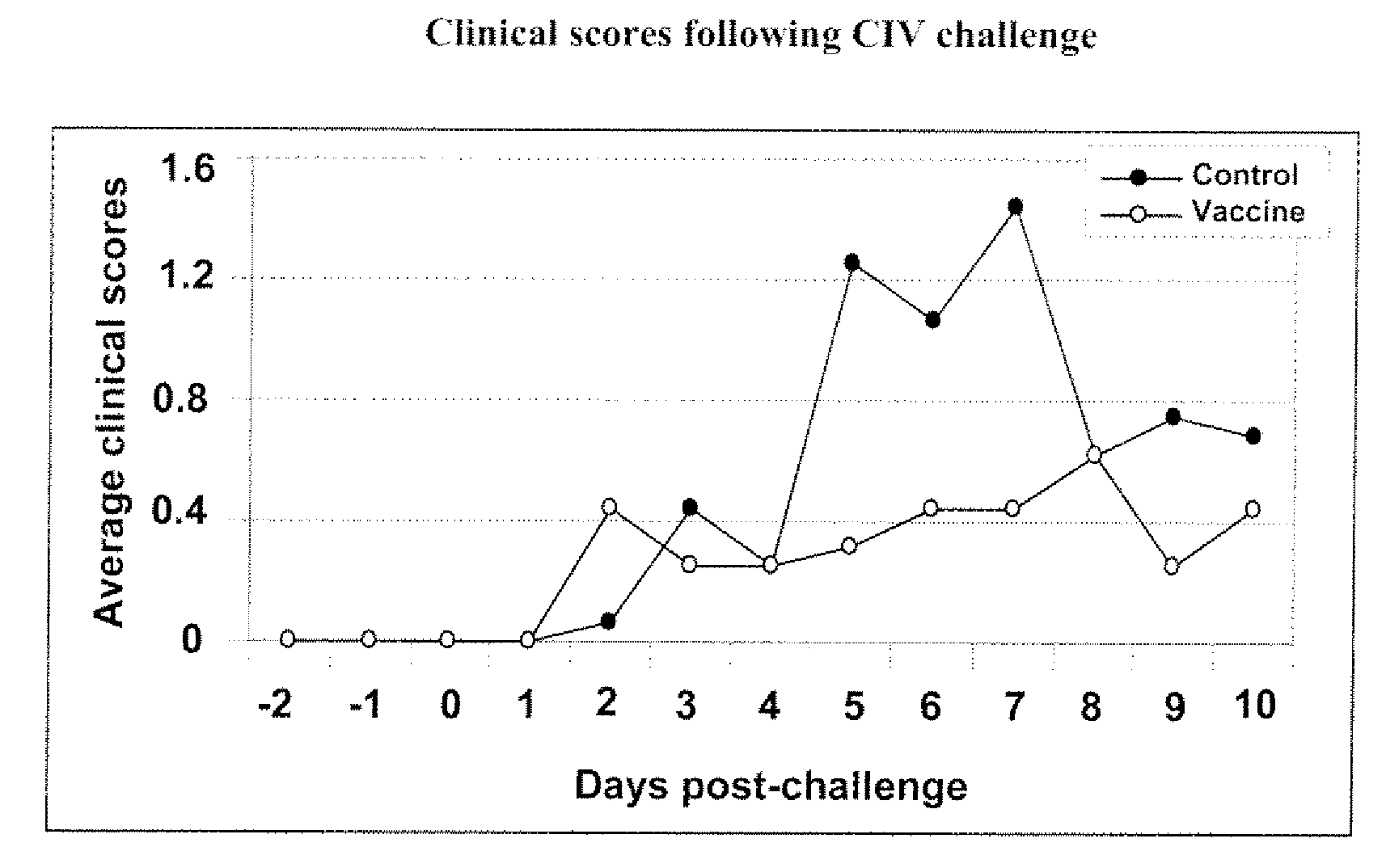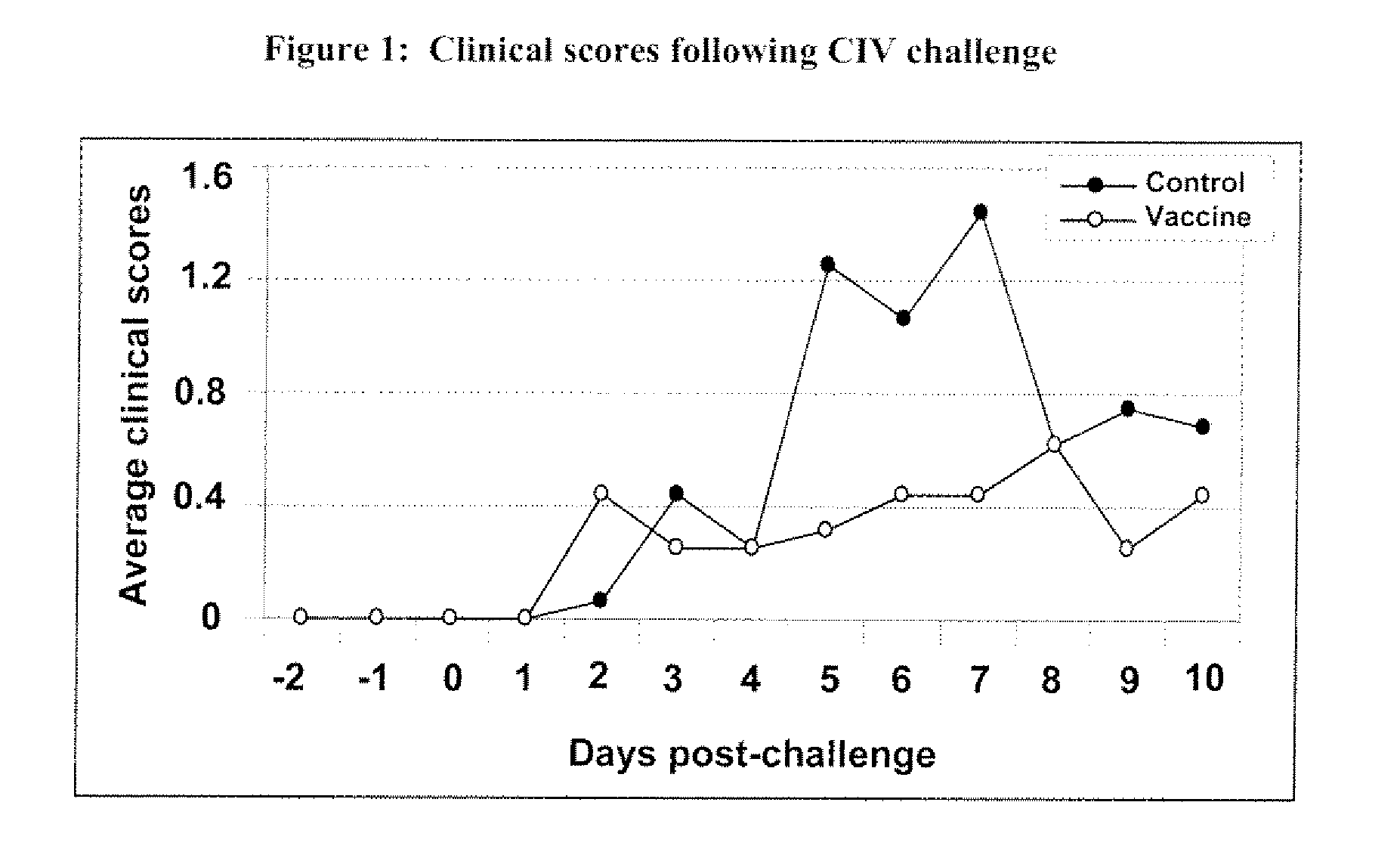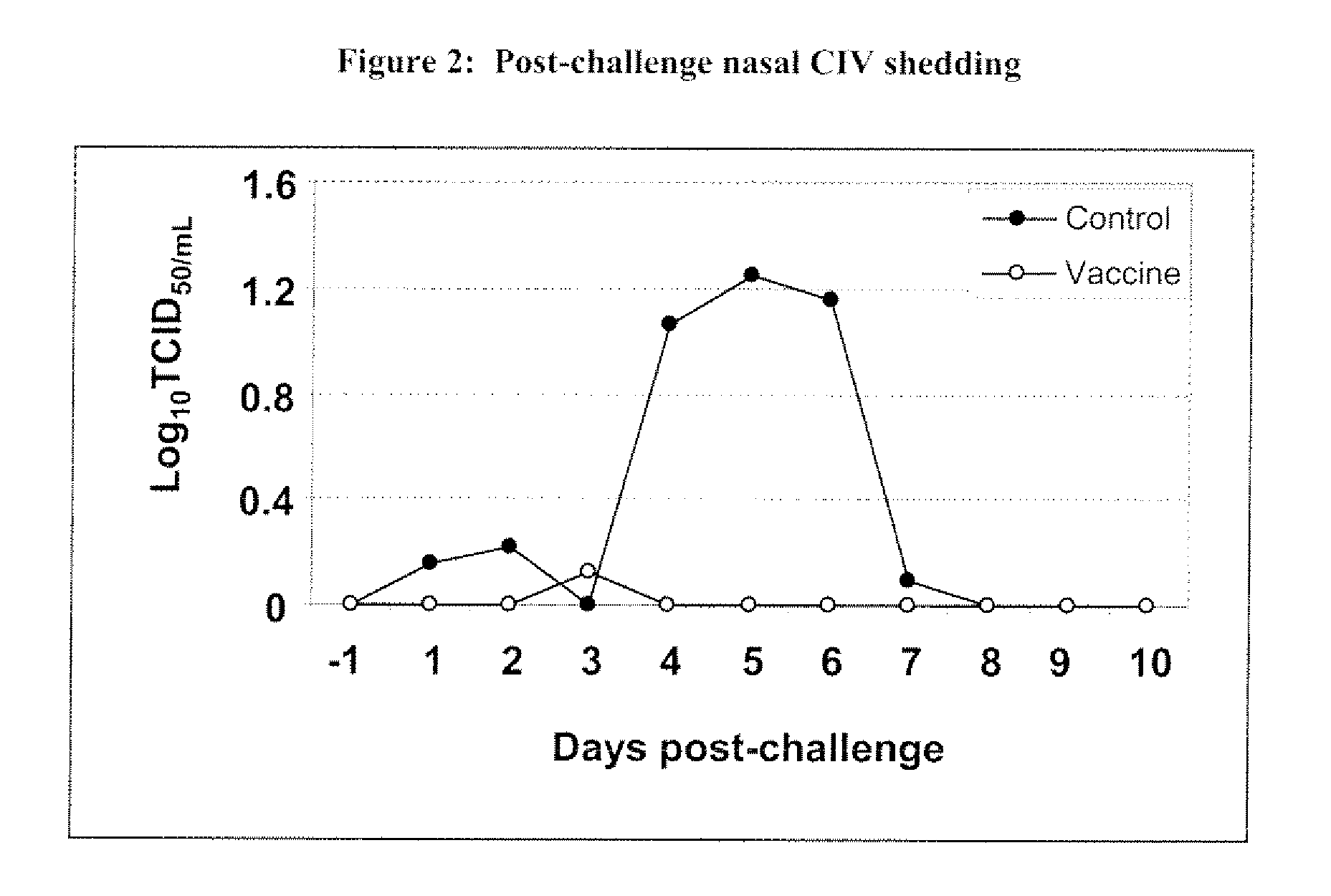Method for Replicating Influenza Virus in Culture
a technology of influenza virus and culture, applied in viruses/bacteriophages, antibody medical ingredients, recovery/purification, etc., can solve the problems of epidemic and or pandemic, influenza symptoms, and considerable loss of life, and achieve the effect of saving critical tim
- Summary
- Abstract
- Description
- Claims
- Application Information
AI Technical Summary
Benefits of technology
Problems solved by technology
Method used
Image
Examples
example 1
Chemicals and Biologicals
[0107]The infection medium used contained 1 Liter DMEM (Cambrex, Catalog No. 04-096) or equivalent; stored at 2-7° C., 20 mL L-Glutamine (Cellgro, Catalog No. 25-005-CV) or equivalent; stored frozen at −10° C. or colder. Once thawed, it was stored at 2-7° C. for up to 4 weeks, and Type IX Trypsin (Sigma Product No. T0303, CAS No. 9002-07-7) or equivalent; was aliquoted and stored frozen at −5 to −30° C. The infection medium was freshly made before infecting the cells.
[0108]The cell culture medium preparation was as follows, 1 Liter DMEM, 20 mL L-Glutamine, 50 mL Fetal Bovine Serum (Gibco Catalog No. 04-4000DK) or equivalent (Note: Sourced from a BSE free country). The complete medium was stored at 2-7° C. for no more than 30 days after preparation.
[0109]EDTA-Trypsin (Cellgro Catalog No. 98-102-CV or equivalent) used for passaging the cells was stored at −5 to −30° C., expiration date was assigned by the manufacturer.
example 2
Cell Culture Preparation
[0110]Because the dilution of protease to be used for the virus infection step can vary by lot, new trysin lots were titrated to establish the optimal level prior to use. An example of the titration is to serial dilute type IX trypsin in DMEM containing L-glutamine, using half log dilutions (10−1, 10−1.5, 10−2, 10−2.5, etc.). Using a 96 well plate containing a freshly confluent monolayer of Vero cells, wash each well of the plate 2 times using 280 μL of PBS. Immediately after washing, add 200 μL of each dilution of type IX trypsin to a row of the plate. The plate is then incubated at 37° C. plus or minus 2° C. with 5% CO2 and the cells are observed after 4 days. The lowest dilution of trypsin that shows no or little effect on the health of the cells is selected as an appropriate concentration of trypsin to use for both isolation and optimization of infection with influenza. It is desirable and common to see little or no variation between wells inoculated with...
example 3
Limit Dilution Coning
[0117]Preparation of Dilution Tubes and Sample Dilution for Limit Dilution Cloning was as follows. Test tubes (12×75 mm) were set up in racks and labeled. 1 sample was run per plate and the dilution series for each sample was 10−1 to 10−10 Dilution medium was dispensed in 1.8 mL amounts into each test tube using a serological pipette. The first tube was labeled with the virus identification. Several additional tubes were prepared for use as diluent controls and for replacement if any errors are made during dilution performance. Samples were vortexed for approximately 5 seconds, then the initial dilution was made by pipetting 200 μL of sample into the 10−1 dilution tube. Serial dilutions were continued to 10−10. For each dilution, the sample was vortexed and the pipette tip was changed between dilutions.
[0118]Dilutions were transferred to cell plates as follows. Immediately prior to use, the medium was aseptically poured from the cell plates. Each well was rinsed...
PUM
| Property | Measurement | Unit |
|---|---|---|
| Fraction | aaaaa | aaaaa |
| Fraction | aaaaa | aaaaa |
| Mass | aaaaa | aaaaa |
Abstract
Description
Claims
Application Information
 Login to View More
Login to View More - R&D
- Intellectual Property
- Life Sciences
- Materials
- Tech Scout
- Unparalleled Data Quality
- Higher Quality Content
- 60% Fewer Hallucinations
Browse by: Latest US Patents, China's latest patents, Technical Efficacy Thesaurus, Application Domain, Technology Topic, Popular Technical Reports.
© 2025 PatSnap. All rights reserved.Legal|Privacy policy|Modern Slavery Act Transparency Statement|Sitemap|About US| Contact US: help@patsnap.com



